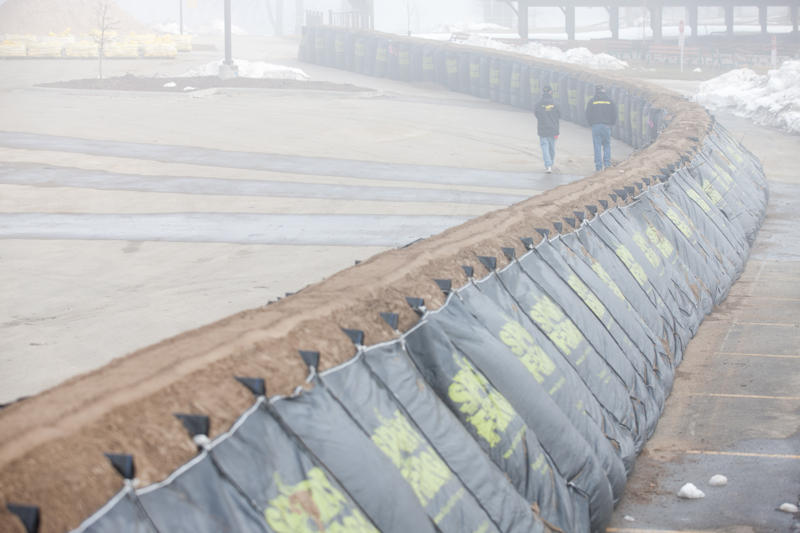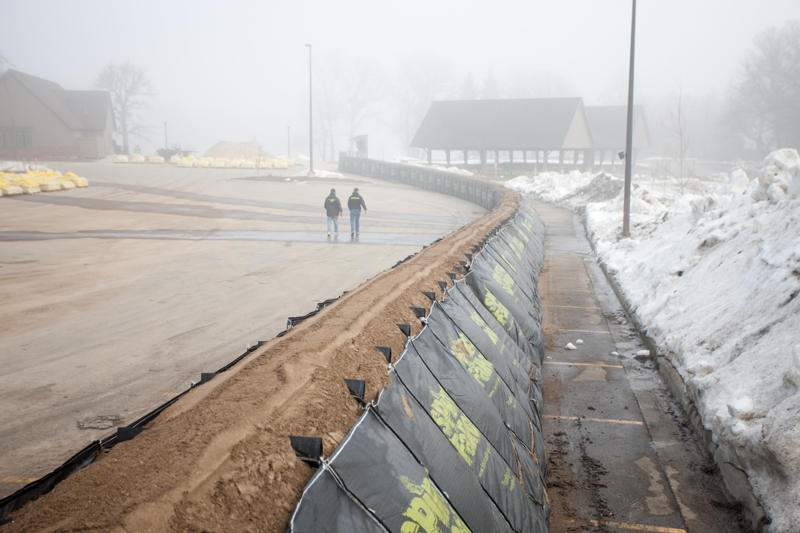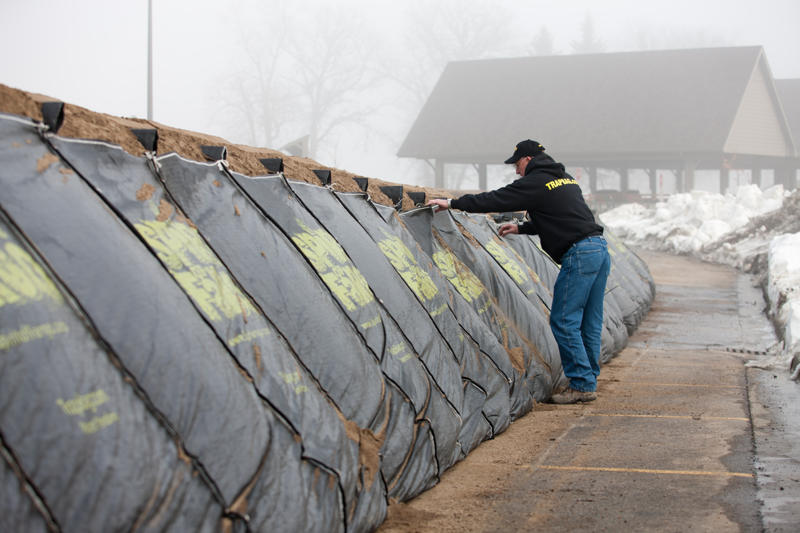How Much Does a Flood Control System Cost?
How much does a flood control system cost? Explore the cost factors of TrapBag's innovative water-filled barrier solutions for temporary flood protection in this guide.

With climate change intensifying and severe weather events becoming more frequent, more and more communities are grappling with the devastating impact of flooding.
Protecting homes, businesses, and infrastructure from the destructive force of floodwaters is a pressing concern, and implementing effective flood control systems is a necessity.
That’s why it’s good to know how much a flood control system costs and how it compares to the flood damage expenses that can occur without a strong system.
What Factors Can Affect the Cost of Flood Control Systems?
Several factors influence how much flood control systems cost, including the type of system, installation area, and environmental considerations.
Geographical factors like the presence of drainage basins, the need for vegetation to prevent erosion, and the integration with existing infrastructure like storm drains and sewage systems also play a significant role in determining expenses.
The probability of flooding, the severity of potential flood consequences, and the expected long-term savings and benefits from the flood control system are critical in evaluating the overall cost.
These factors, coupled with a thorough cost-benefit analysis, return on investment evaluations, and consultations with professionals, help communities make informed decisions regarding the most cost-effective and efficient flood control system.
How Climate Change Is Impacting Costs
Climate change is significantly reshaping the landscape of flood control system costs, posing several critical challenges.
The U.S. is experiencing heightened flood risks due to climate change, with more frequent heavy downpours and melting snowpacks threatening multiple states. This uptick in flood risk is directly translating into higher costs for implementing and maintaining adequate flood control measures.
The American Society of Civil Engineers has highlighted the deteriorating condition of the nation’s flood control infrastructure, assigning it a D grade. This aging infrastructure, coupled with planning based on historical rather than predictive flood patterns, necessitates significant investments to upgrade and adapt existing systems to the changing climate.
To combat these challenges, communities are turning to nature-based solutions like bioswales, wetlands, and rain gardens to mitigate runoff and absorb rainwater. However, with climate change projected to increase U.S. flood damage by 26% by 2050, the financial burden of implementing both traditional and innovative flood control systems is expected to rise substantially. Notably, proposals for new large-scale projects, such as the six-mile-long sea wall to protect the New York region, underscore the escalating costs, with estimates reaching $120 billion.
What Is the Cost of Flood Damage?
The financial and emotional toll of flooding on communities can be overwhelming, with the aftermath often leaving a trail of substantial economic burdens. Understanding the cost implications of flood damage is pivotal for effective flood risk management.
Immediate Costs
Even a few inches of water can cause significant damage, leading to an average cost of $25,000 for just 1 inch of water in a home. Key repair costs include:
- Drywall repair: Approximately $250 for every four square feet
- Mold remediation: Around $1,500 per 200 square feet of wall and ceiling space
- Vinyl floor replacement: Estimated at $1,000 per 200 square feet
- Plumbing repairs: Between $500 and $1,000 to solder pipe damage
Long-term Costs
The average annual cost of flood damage in the US from 1980 to 2021 is about $8.2 billion, adjusted for inflation. Water damage restoration costs for homeowners range from $1,200 to $5,000, with an average of $3,669.
How Much Do Flood Control Systems Cost?
Sandbags
Sandbags have long been a go-to solution for temporary flood protection since they offer a relatively inexpensive option for communities facing imminent flooding threats. A single bag can cost around $5, though buying them in can significantly lower their price.
Natural Solutions
Implementing natural flood control solutions, such as restoring wetlands, constructing rain gardens, and planting vegetation along riverbanks, can be a cost-effective and environmentally friendly approach. However, the costs can vary greatly depending on the size of the project and the complexity of the ecosystem restoration efforts.
According to a study by the Environmental Protection Agency (EPA), the average cost of wetland restoration projects ranges from $25,000 to $100,000 per acre.
Drainage Systems
The costs of installing drainage systems for flood control can vary widely based on several factors, including the type of system, size, and additional requirements such as permits and landscape repairs.
Dams
Dams are one of the most expensive flood control methods. For instance, the Spring Creek Flood Control Dam’s feasibility study by the San Jacinto River Authority (SJRA) initially estimated costs between $80 million and $132 million, which later escalated to $179 million due to unforeseen challenges.
Flood Walls & Levees
Erecting flood walls and levees can be an effective way to protect communities from rising waters, but these structures can be costly to build and maintain. Floodwalls require meticulous engineering to create a sturdy foundation that is erosion-resistant and capable of handling water current stress.
Large-scale projects, like sea walls for U.S. coastal cities, are projected to require at least $42 billion by 2040, with Florida facing the highest estimated costs at $76 billion.
How TrapBags Can Help
TrapBag offers a versatile and efficient solution for flood control, providing communities with a reliable and cost-effective alternative to traditional methods. These innovative bags can be filled with sand, gravel, or concrete to create temporary or permanent barriers, making them suitable for a wide range of applications, including flood barriers, seawalls, infrastructure support, and emergency flood protection.
TrapBags are a more efficient choice than sandbags since they require 40% less fill material. They are also more affordable than other barrier methods, such as steel walls or concrete blocks.
How Much Do TrapBags Cost?
-
-
- 1-4 sections (50-200 ft): $1,375.00 each
- 5-7 sections (250-350 ft): $1,250.00 each
- 8-10+ sections (400-500 ft): $1,125.00 each
-
-
-
- 1-4 sections (50-200 ft): $2,750.00 each
- 5-7 sections (250-350 ft): $2,500.00 each
- 8-10+ sections (400-500 ft): $2,250.00 each
-
-
- 2 ft TrapBag barriers (TBRD60): $1,750.00 each
- 4 ft TrapBag barriers (TBRD120 – 15m (50 ft) Sections): $3,500.00 each
Order a TrapBag Flood Control System
Don’t let flooding wreak havoc on your community. Protect your homes, businesses, and infrastructure with TrapBags. Reach out to our team for a quote on your flood control system.


